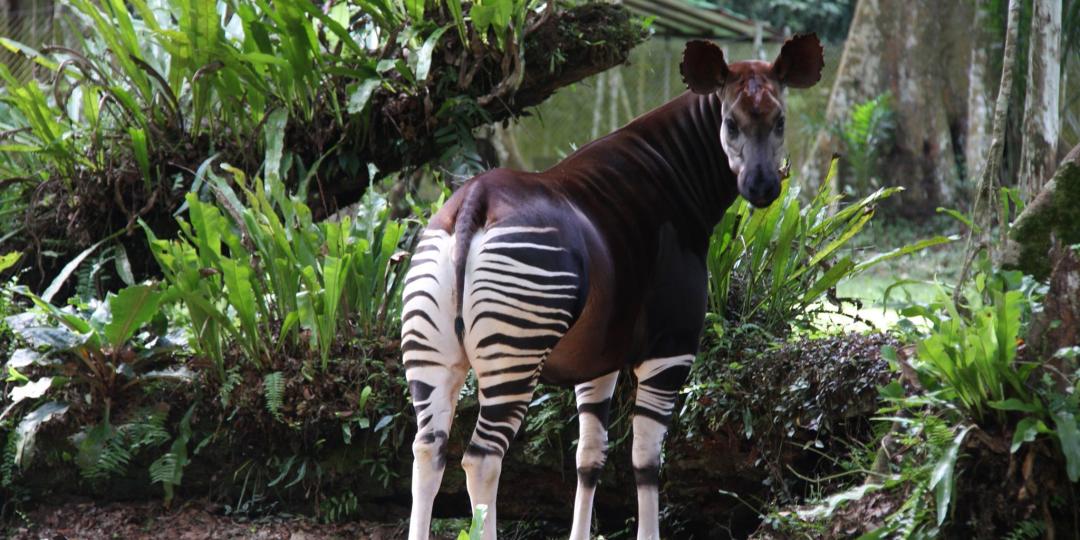The national animal of the Democratic Republic of the Congo, the okapi, is often described as ‘half-zebra, half-giraffe, an animal so rare that is was unknown to the western word until the turn of the 20th century’. However this hybrid-looking creature faces many growing threats, including habitat loss due to the exploitation of the country’s resources.
The okapi has been known to the locals for centuries; however it was first discovered by the western world in 1901 by Sir Harry Johnston.
The current okapi population sits at between 10 000 and 15 000 yet there are not many reliable resources available to determine an approximate number, as they are found in areas plagued by issues of security and political instability. “It is too dangerous to census their populations in the majority of their range,” explains Lucas T. Meers, Conservation Programme Officer (OCP) for the Okapi Conservation Project, which serves the Okapi Wildlife Reserve, home to between 3 000 and 3 500 of the animals. Meers says in the reserve the population is stable.
The sustained presence of humans in the okapis’ natural habitat has severely impacted the population, as the animals need undisturbed tracts of forest to survive. The continued pressure of illegal gold mining, deforestation and bush meat poaching, has ultimately led to their decline. In addition, the presence of armed rebel groups has made it difficult for conservationists to effectively protect okapis in certain areas.
Endemic to the DRC, the okapi is rarely seen, yet holds the potential to generate much-needed revenue for the country. Meers says visitors almost always want to see an okapi or a gorilla, however travel to the reserve is discouraged as unpredictable security breaches can happen at any moment. “In the past, we would host hundreds of visitors a week,” says Meers. Currently, the reserve receives few visitors.
“The conservation of the okapi can not only promote eco tourism to the country, but when tourism becomes re-established, it is a sign that peace is coming to the country,” says Meers.
OCP takes a holistic approach to conserving the okapi, working with the Institute Congolais pour la Conservation de la Nature (ICCN), and the governmental authority charged with protecting the DRC’s natural areas to provide support, equipment and training for the 180-man ranger force that patrols the Okapi Wildlife Reserve, removing snares, arresting poachers and removing miners.
OCP works with local communities to provide programmes and opportunities that aim to reduce human impact on the forest environment, educating locals on the importance of protecting the okapi and the integrity of the rainforest.
In closing, Meers says: “It is our hope that by protecting the okapi, we can help bring the country’s citizens together to benefit all people and wildlife.”























